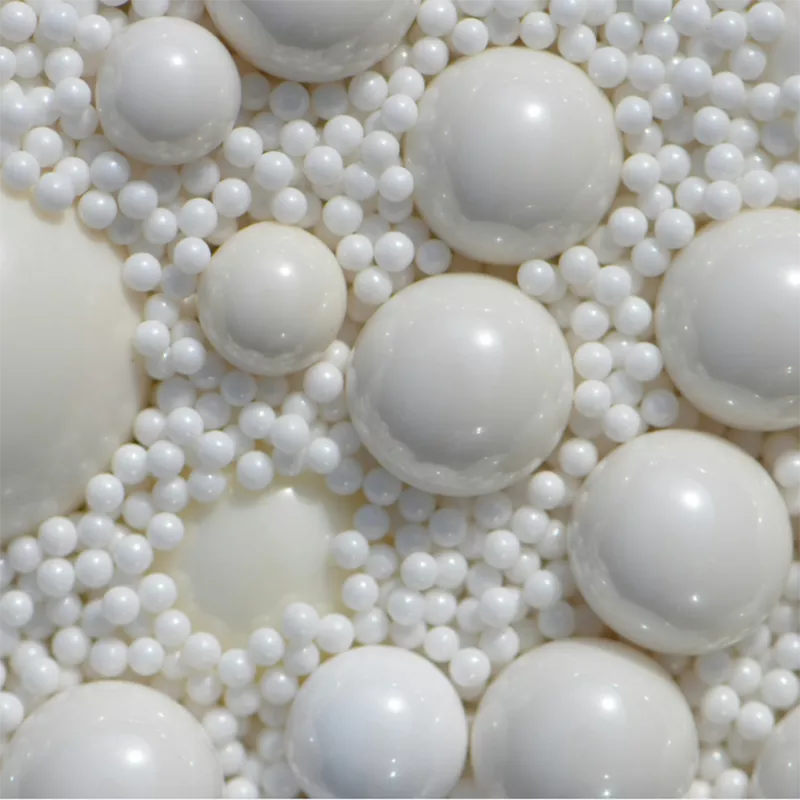As material fineness requirements escalate, the prevalence of sand mills grows, resulting in an expanding array of grinding media options. The pivotal and intricate task of selecting the ideal grinding media tailored to one's production process and conditions demands a meticulous approach. Below, a concise breakdown delineates key considerations:

Zirconia beads
Grinding media, encompassing glass beads, ceramic beads (comprising zirconium silicate beads, composite zirconium beads, alumina beads, rare earth metal stabilized zirconia beads, etc.), and steel balls, diverge based on distinct materials. The crystal structure of each bead is dictated by variations in chemical composition and manufacturing processes. A dense crystal configuration secures heightened strength, superior wear resistance, and minimal ink absorption. Differing component ratios influence the specific gravity of grinding beads, with higher specific gravity ensuring enhanced grinding efficiency. Moreover, the natural wear of these beads during grinding impacts slurry performance. Hence, aside from assessing wear rates, the presence of specific chemical elements must be factored in. For instance, in grinding tasks involving tape powder or electronic component slurries, metal elements like Fe and Cu warrant avoidance, necessitating the exclusion of beads containing Fe2O3 or CuSO4. Consequently, zirconium beads often emerge as the preferred choice in this industry. Similarly, sectors such as pesticide, pharmaceuticals, and biochemistry prioritize evading heavy metals, notably PbO. Ultimately, the interplay between physical properties (hardness, density, wear resistance) determined by bead composition and their potential slurry contamination guides the selection of the optimal grinding medium.
Density, quantified through specific gravity (true specific gravity) and bulk weight (apparent specific gravity), hinges on molecular weight and oxide composition, as detailed in Table 1. Generally, higher specific gravity fosters greater impulsion, escalating grinding efficiency while accentuating wear on contact components (inner cylinder, dispersion plate, etc.) of the grinder. Consequently, aligning slurry viscosity and flow emerges as a pivotal concern. Low-density abrasive beads suit low-viscosity slurries, whereas high-density variants suit their viscous counterparts.
Bead size dictates the quantum of contact points with the material. Theoretically, a greater number of contact points between smaller beads within a fixed volume heightens grinding efficiency. However, when dealing with materials featuring larger particles during initial tests, using beads of d = 1mm for a 100-micron slurry might not harness sufficient impulsion for complete grinding and dispersion. In such scenarios, larger particle-sized beads are more suitable.
Commonly gauged through Mohs and Vickers indices (as showcased in Table 2), higher bead hardness doesn't unequivocally equate to lower wear rates. Consider, for instance, the wear on the grinding ball's contact parts with the grinder. Balls with higher hardness contribute to increased wear on contact components like the dispersing disc, bar pin, and inner cylinder. Yet, optimizing the filling amount of the ball, slurry viscosity, flow rate, and other parameters can attain an optimal balance.
In summary, meticulous assessment of chemical composition's influence on physical properties and potential slurry contamination underpins the judicious selection of an ideal grinding medium aligned with specific production prerequisites and conditions.
A1: For electronic component slurries, avoiding metal elements like Fe and Cu is crucial, making zirconium beads a prevalent choice due to their suitability.
A2: These industries prioritize avoiding heavy metals like PbO, emphasizing the importance of choosing the appropriate grinding medium.
A3: Higher density in grinding beads typically enhances grinding efficiency but also increases wear on grinder contact parts.

Submit your demand,
we will contact you ASAP.

Sanxin New Materials Co., Ltd. focus on producing and selling ceramic beads and parts such as grinding media, blasting beads, bearing ball, structure part, ceramic wear-resistant liners, Nanoparticles Nano Powder

